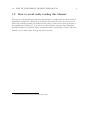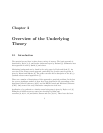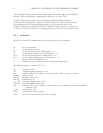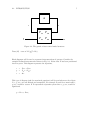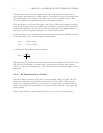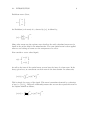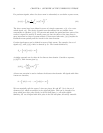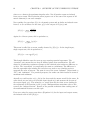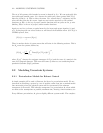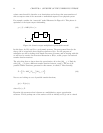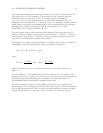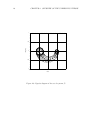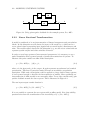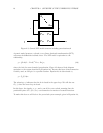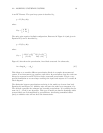
12 CHAPTER 2. OVERVIEW OF THE UNDERLYING THEORY
where σ
max
denotes the maximum singular value. Not all matrix norms are induced
from vector norms. The Froebenius norm (square root of the sum of the squares of all
matrix elements) is one such example.
Now consider the case where P(s) is a dynamic system and we define an induced norm
from L
2
to L
2
as follows. In this case, y(s) is the output of P(s)u(s)and
P(s)=max
u(s)∈L
2
y(s)
2
u(s)
2
.
Again, for a linear system, this is equivalent to,
P(s) =max
u(s)∈BL
2
y(s)
2
.
This norm is called the ∞-norm, usually denoted by P(s)
∞
. In the single-input,
single-output case, this is equivalent to,
P(s)
∞
= ess sup
ω
|P(ω)|.
This formal definition uses the term ess sup, meaning essential supremum. The
“essential” part means that we drop all isolated points from consideration. We will
always be considering continuous systems so this technical point makes no difference to
us here. The “supremum” is conceptually the same as a maximum. The difference is
that the supremum also includes the case where we need to use a limiting series to
approach the value of interest. The same is true of the terms “infimum” (abbreviated to
“inf”) and “minimum.” For practical purposes, the reader can think instead in terms of
maximum and minimum.
Actually we could restrict u(s) ∈H
2
in the above and the answer would be the same. In
other words, we can look over all stable input signals u(s) and measure the 2-norm of
the output signal, y(s). The subscript, ∞, comes from the fact that we are looking for
the supremum of the function on the ω axis. Mathematicians sometimes refer to this
norm as the “induced 2-norm.” Beware of the possible confusion when reading some of
the mathematical literature on this topic.
If we were using the power norm above (Equation 2.1) for the input and output norms,
the induced norm is still P(s)
∞
.



